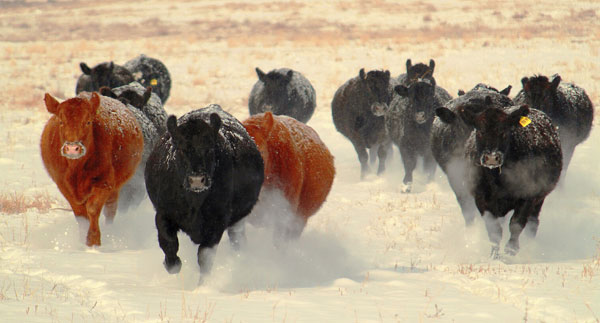Preparing for financial opportunity – Retention of heifers
Now is the time to prepare for the future and that means retaining heifers.
October 10, 2022

After a couple months of dealing with drought and heat related topics it’s time to look ahead at some of the financial opportunities on the horizon. Cattle producers need to act as business managers and assess inventories of all resources and commodities on hand to determine the best course of action to maximize their profit potential over the next several years. Regardless of what you have done in the past, now is the time to prepare for the financial opportunities that lie ahead in the cattle business. This week we address the upside of heifer retention.
Consider the following:
Drought has resulted in cyclically low cattle inventories. The laws of supply and demand dictate that when cattle inventories are low the future value of cows, calves, yearlings and feds will increase. Feedlot placement data shows more heifers going on fed as opposed to being retained as replacements. What opportunities does this create? The opportunity to market bred replacement heifers at premium values in the future.
This week, the USDA Oklahoma Weekly Cattle Auction Summary tells us that 477 pound, Medium and Large frame, Muscle Score 1 heifer calves traded at an average of $162.79/cwt. This translates to a total value per head of $777.
If we collect weights on our four to seven year old cows at weaning we can determine the average mature weight of our cow herd.
If we assume: 1) these heifers will be 14-15 months old by May 1, 2023 when we are ready to begin our breeding season, 2) they need to be at 65% of their mature weight at that time to be cycling and ready to breed and, 3) our average mature cow weighs 1,300 pounds.
It permits us to calculate the following:
1,300 x .65 = 845 pounds target weight by May 1, 2023
845 – 477 = 368 pounds of gain needed over the next 200 days
368/200 = 1.84 pound average daily gain needed from now until breeding season
As we take inventory of our hay, silage, feed grains and potential for winter grazing we need to arrive at a ball park figure for the cost of gain (COG) on the 368 pounds needed to reach the target weight. This could be achieved in multiple ways depending on available feed resources. For this example I will assume a cost of gain at $.80, $1.05 and $1.30 to make the following calculations:
At $.80 COG: 368 x .80 = $295. This added to the current value of the heifer at $777 equals $1,072. To account for opportunity cost, financing, additional grazing past breeding season, potential death loss and the cost of breeding naturally or AI, I am raising this value by 10% resulting in a breakeven value of $1,180. Do you believe bred heifers will be worth at least $1,180/head a year from now?
At $1.05 COG: 368 x 1.05 = $387. This added to the current value of the heifer at $777 equals $1,164. Again, raising that value by 10% to account for previously stated expenses results in a breakeven of $1,281.
At $1.30 COG: 368 x 1.30 = $479. This added to the current value of the heifer at $777 equals $1,256. Again, raising that value by 10% results in a breakeven of $1,382.
Manage your business, do the math, take inventory of your resources and consult with a nutritionist. Each of the breakevens calculated above are below the fall values of good quality, spring calving, bred heifers over the past couple of years.�
Resource: USDA Oklahoma Weekly Cattle Auction Summary. AMS Livestock, Poultry & Grain Market News. Oklahoma Dept. of Ag Mrkt News. October 7, 2022
Dr. Mark Johnson talks about management of replacement heifers on SunUP TV’s Cow-Calf Corner from April 2, 2022. https://www.youtube.com/watch?v=cbAdfmVTyYQ&list=PLglOSpV-Tcac6-pVMv0BEAk78_7tJCuap&index=34&t=4s
Source: Oklahoma State University, who is solely responsible for the information provided and is wholly owned by the source. Informa Business Media and all its subsidiaries are not responsible for any of the content contained in this information asset.
You May Also Like


.png?width=300&auto=webp&quality=80&disable=upscale)
